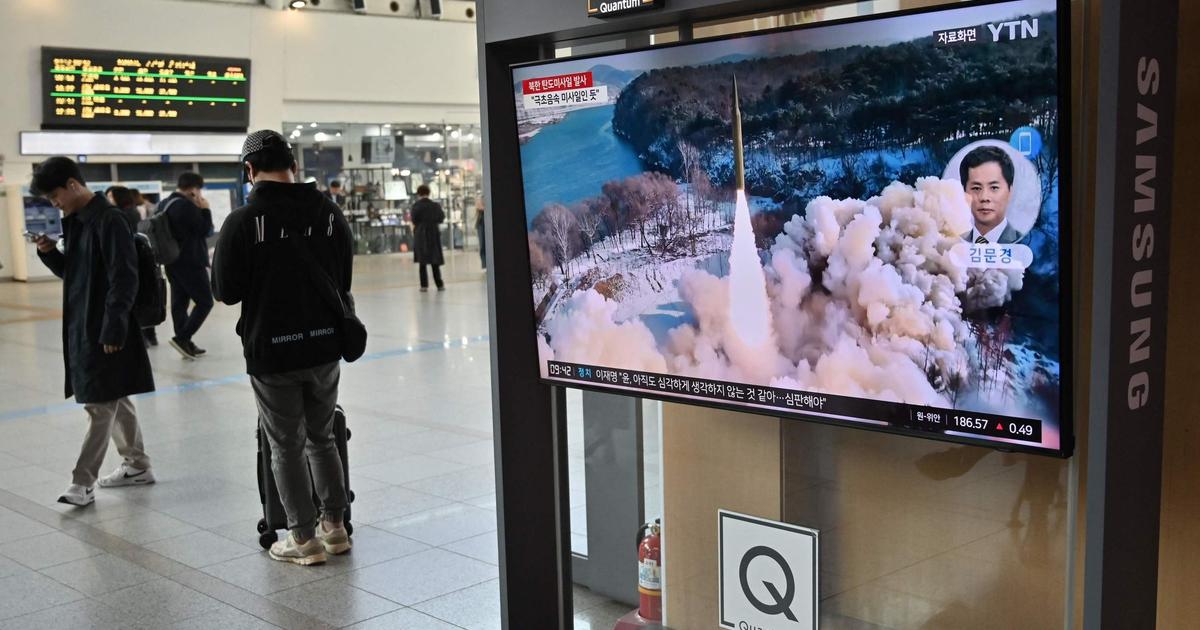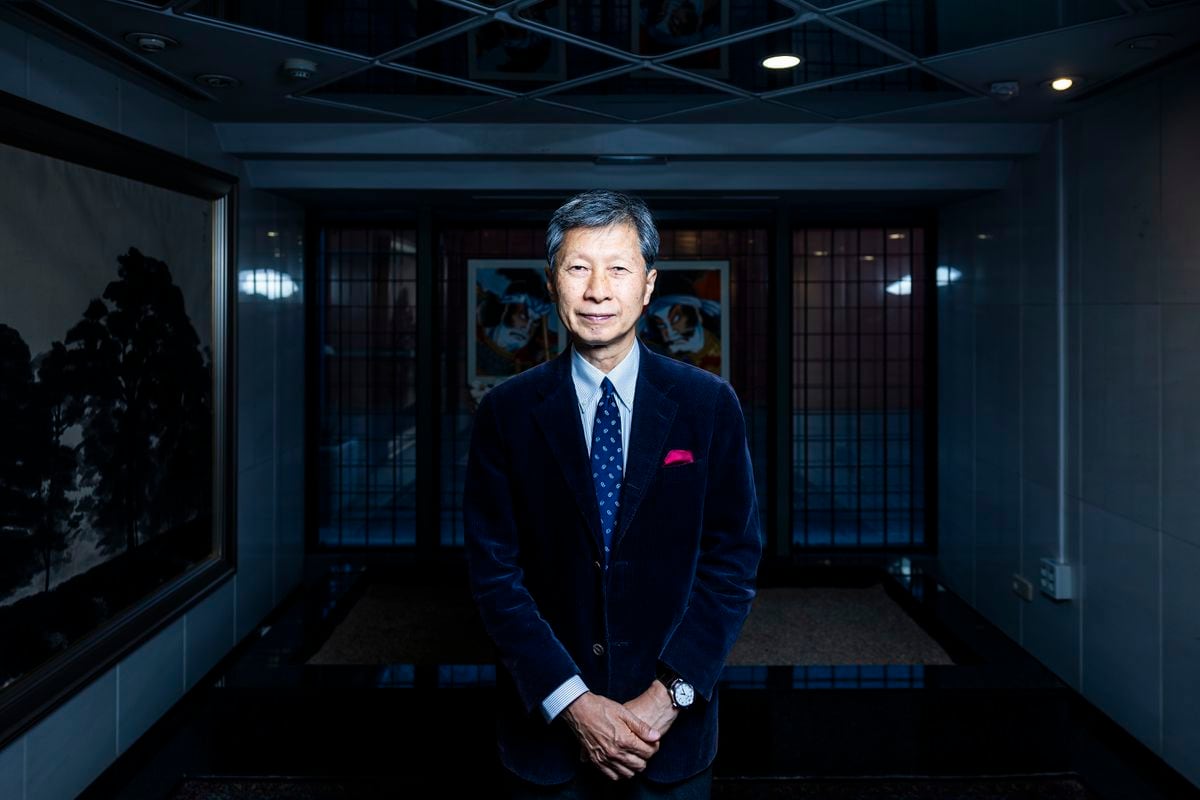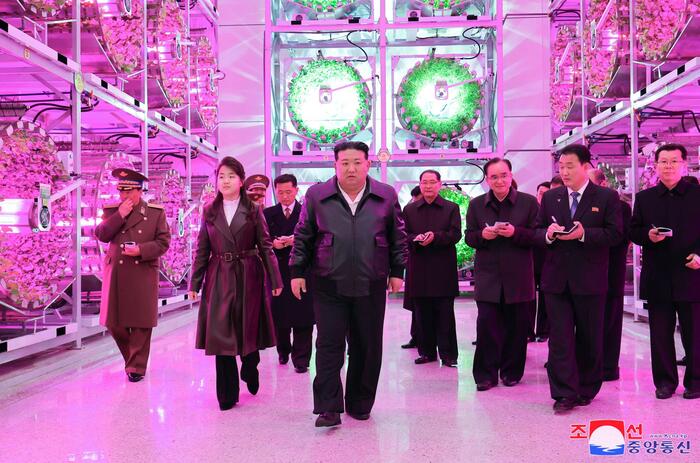North Korea buries the most conciliatory version that it exhibited years ago.
Kim Jong-un has chosen in recent months to threaten his enemies like never before, firing almost 70 missiles this year, more than double the sum of those launched during the decades that his father and his grandfather ruled. the.
The spotlight on Ukraine and the protection in the UN Security Council, which Russia and China now offer him, give Kim a sense of impunity that has led to an unparalleled frenzy of weapons tests and provocations against South Korea. Japan and the United States.
Pyongyang has closed the door on any close negotiations with Washington and has passed legislation making its nuclear statehood "irreversible."
North Korean weapons programs are always surrounded by unknowns.
The lack of transparency and the exaggerations of the propaganda cast doubts about the effectiveness of its missiles, but analysts agree that the communist regime has already irrefutably demonstrated its ability to reach any point in the United States with its intercontinental ballistic missiles.
After several decades in which Pyongyang's nuclear breath was felt above all in South Korea and Japan, and which later reached the US island of Guam, the North Korean Armed Forces have tested this year with a missile of gigantic proportions that many analysts nicknamed
The Monster
(Hwasong-17), with the ability to hit almost any area of the planet.
On November 2, during large-scale military exercises by its rivals, Pyongyang fired 25 missiles—the same number as the previous annual record—and one of them flew over the
de facto
maritime border between the two Koreas.
In addition, it launched hundreds of artillery pieces into the sea.
"North Korea always responds to maneuvers with short-range missile launches," says Jenny Town, director of
North38
, a US portal that tracks the actions of the North Korean army.
"But what happened this month has been of a magnitude that has never been seen before," adds the researcher.
Military activity in the region of their enemies is also on the rise.
On the one hand, it responds to Kim's provocative and threatening attitude, but also to the government changes of the last two years in Washington and Seoul.
The recent maneuvers by the United States, South Korea and Japan have been the largest ever carried out in the area and the first since 2017, after a period in which the annual rehearsals were successively canceled, first by decision of former South Korean President Moon Jae-in. and then by the coronavirus pandemic.
Seoul's response to some of Pyongyang's provocations has also been more forceful than usual: In early November, three South Korean warplanes fired air-to-surface missiles in waters off the North Korean coast.
This year's intercontinental missiles were the first the North Korean regime has tested since 2017. The Hwasong-15 that Pyongyang fired just five years ago already showed enough range to hit the United States, but launches in recent months have The doubts that may remain regarding the distance that they are capable of traveling have been cleared up, but not those that remain around the precision or the nuclear charge that they can transport.
In addition to the projectiles that can travel more than 10,000 kilometers, the Asian country has also tested dozens of short- and intermediate-range rockets this year, a reminder of the different weapons programs under development —focused on South Korean, Japanese or American targets.
A good summary of the volatile situation, seen through Pyongyang's prism, can be found in the statement issued on November 24 by Kim Yo-jong, Kim Jong-un's younger sister.
"If they think that with sanctions they can get out of the current dangerous situation, they must be really idiots," she said of South Korea's proposal to impose a new round of punishments on North Korea for its ballistic tests.
Since 2006, the North Korean dictatorship has been prohibited from carrying out nuclear or ballistic missile tests.
Its constant violations of the veto have resulted in countless sanctions, the last in 2017. Now, the picture is very different.
In the summer, both Russia and China blocked any attempt by the United States to expand the sanctions list.
Reach Growth
The latest intercontinental missiles launched by North Korea can reach most of the world
Iran
India
China
Russia
Spain
korea
North
Nodong
(1993) 1,500km
Kingdom
United
Musudan
(2016) 3,500km
Canada
USA
hwasong-14
10,000km
hwasong-15
13,000km
hwasong-17
17,000km
Source: The CNS North Korea Missile Test Database
and own elaboration.
RODRIGO SILVA / THE COUNTRY
Reach Growth
The latest intercontinental missiles launched by North Korea can reach most of the world
Iran
India
China
Russia
Spain
korea
North
Nodong
(1993) 1,500km
Kingdom
United
Musudan
(2016) 3,500km
Canada
USA
hwasong-14
10,000km
hwasong-15
13,000km
hwasong-17
17,000km
Source: The CNS North Korea Missile Test Database
and own elaboration.
RODRIGO SILVA / THE COUNTRY
Reach Growth
The latest intercontinental missiles launched by North Korea can reach most of the world
Iran
India
thailand
China
Mongolia
Russia
korea
North
Spain
hwasong-5
(1984) 300km
Norway
Kingdom
United
Japan
Nodong
(1993) 1,500km
Guam
greenland
Musudan
(2016) 3,500km
papua
New
Guinea
Canada
hwasong-14
10,000km
USA
hwasong-15
13,000km
Mexico
hwasong-17
17,000km
Source: The CNS North Korea Missile Test Database and own elaboration.
RODRIGO SILVA / THE COUNTRY
In his statement, Kim Yo-jong justified the regime's missile tests as "legitimate defense" against allied maneuvers in the area;
he called Seoul a "lapdog" and "America's puppet", and expressed nostalgia for the good old days, when former President Moon facilitated a rapprochement.
She was the one who made the first trip by a member of the Kim dynasty to the South in 2018.
“Desperate sanctions and pressure from the US and its South Korean puppets,” she warns, will only “add more fuel to the fire of hostility and anger” and be the “noose” that finally ends their enemies.
Goodbye to the rapprochement of Trump and Kim
Kim Yo-jong often plays the role of his brother's lieutenant, always one step behind.
He picked up, for example, the cigarette butt that the Bright Comrade threw on the ground on the way to Hanoi (Vietnam), to prevent his DNA trace from falling into enemy hands.
It was February 2019 and they were on their way to the second face-off between Kim and then-US President Donald Trump.
Those were other times: the seemingly hopeful era in which the present muddy situation was largely forged.
The rapprochement between the blond tycoon and the dictator with the toupee — who just over a year earlier had insulted each other with terms such as “rocket man” and “old dodder” — sought the denuclearization of the North Korean regime in exchange for the withdrawal of sanctions on the country.
It didn't work.
After an initial vibrant crush — “Kim and I fell in love,” Trump went so far as to say — there was no understanding;
there were no real chances either: the North Korean entourage was prepared to offer very few concessions, while the American delegation was not going to sign off on anything short of full denuclearization.
With the arrival of Joe Biden to the White House in 2021, the Korean problem receded into the background;
and the prevailing school of thought in Pyongyang seems to be that negotiating with the United States now offers much less than cuddling with Russia and China.
With the arrival of Joe Biden to the White House in 2021, the Korean problem receded into the background;
and the prevailing school of thought in Pyongyang seems to be that negotiating with the United States now offers much less than cuddling with Russia and China.
With the arrival of Joe Biden to the White House in 2021, the Korean problem receded into the background;
and the prevailing school of thought in Pyongyang seems to be that negotiating with the United States now offers much less than cuddling with Russia and China.
The spy services of Washington and Seoul fear that the North Korean agitation is the preamble to a new atomic test, the first since 2017 and the seventh in its history – the only ones in the 21st century on the entire planet.
Joe Byrne, a researcher at the British analysis house Royal United Services Institute (RUSI), explains that satellite images show that in recent months there has been a lot of activity at the Punggye-ri nuclear test center, where all the tests have been carried out. previous essays.
“The US and South Korean governments have announced that North Korean preparations are complete.
Basically, it is already a political decision that depends on a single person, ”says Byrne.
In September,
Testing also allows them to correct imperfections in their artifacts.
Ramón Pacheco Pardo, a professor at King's College London and holder of the KF-VUB Korea chair at the Free University of Brussels, believes that Pyongyang seeks to take advantage of the "window" of the turbulent international context, contaminated by the Russian invasion of Ukraine and the differences between Washington and Beijing, to develop their "technology and capabilities."
"Right now," he says, "neither China nor Russia are going to accept any kind of sanction [in the UN Security Council], for many ballistic missile tests they do or even if they decide to do the nuclear test."
The North Korean nuclear program is also in a way the shield that protects the Kim family.
A constant warning to the indoctrinated citizenry that their main threats are not scarcity and the permanent risk of famine, but those of "imperialism" coming from the other side of the Pacific.
That is why it is not uncommon that during the last launch, immortalized in detail by propaganda, the supreme leader appears together with different members of the clan, including one of his daughters, the middle one, who made his first public appearance, according to intelligence interpretations. south korean
"It's as if he were saying: 'It's not just me, but my family, who will always be protecting you from any possible invasion," concludes Pacheco Pardo.
Each rocket forms a political message that Kim can sell internally while the country is going through a very poor situation, isolated by sanctions and the pandemic and after a few years in which natural catastrophes (typhoons, drought, floods) have occurred.
Clear proof of this is that a few weeks ago he fired an intercontinental missile from a mobile shuttle a few kilometers from the North Korean capital, dazzling hundreds of thousands of residents.
Crossed interests with Moscow
The current harmony between Pyongyang and Moscow is the reflection of conflicting interests in a divided world.
Their relations are in one of the best moments in their history, although they have lived through very good times during the Cold War —the North Korean nuclear program was born as a result of that cooperation.
Russian President Vladimir Putin and Kim first met in Vladivostok in 2019, shortly before the rapprochement with Trump derailed.
The recent tensions after the invasion of Ukraine have fanned the embers of that friendship.
In July, North Korea recognized the independence of the self-proclaimed Donetsk and Lugansk people's republics, a step only Russia and Syria had taken.
In August, Putin sent a letter to Kim in which he underlined his intention to expand their "comprehensive and constructive" relations.
In September,
US intelligence claimed that Russia was in the process of buying rockets and millions of artillery pieces from Pyongyang for use in Ukraine.
And in October, the North Korean congratulated Putin on his 70th birthday with a letter praising his vision as a statesman: "With your energetic activity," he wrote, "you have made remarkable achievements in achieving the great strategic goal of building a mighty Russia."
Kim and Putin, in April 2019, in the Russian city of Vladivostok. Alexander Zemlianichenko (AP)
Meanwhile, Beijing —another of the key vertices in this complex geopolitical polyhedron— continues with its calculated equidistance heeling towards North Korea.
China is the great life support of the Kim regime, is responsible for 90% of trade with this country, and notes that any solution requires its approval.
North Korea is, in the eyes of the second largest power on the planet, a cushion that cushions the US presence in its backyard.
China "tolerates and maintains" Pyongyang "as an ally not because it really sees it as a brotherly partner, but because it detests the idea of a unified Korea under the government of Seoul, where the latter continues to maintain an alliance with Washington, and US forces They could reach the border," reflects Professor Nah Liang Tuang, a researcher at S.
Beijing's position on escalation closely resembles the tilted balance toward Russia that it often expresses over the war in Ukraine.
After the launch in early November of more than twenty North Korean missiles in less than 24 hours, a spokeswoman for the Chinese Foreign Ministry called for "addressing each other's concerns in a balanced way through dialogue and consultations."
After the firing of the powerful Hwasong-17, the Chinese official daily
Global Times
gave voice to analyst Lü Chao, from the Liaoning Academy of Social Sciences, to offer context with Beijing dressing.
"The international community must also know that the fundamental reason for the current tension is the increasing pressure of the United States on North Korea," he said.
Kim Jong-un and supposedly his middle daughter greeted a group of scientists working on the missile program, in an undated photograph released on November 27 by the North Korean regime.Europa Press
North Korea's threat to its neighbors south of the 38th parallel is not limited to its nuclear capability.
Its conventional weapons keep part of the South Korean territory in check, including Seoul, located less than 50 kilometers from the Demilitarized Zone.
Some analysts believe that Pyongyang is trying to make the United States' commitment to South Korea and Japan waver at the prospect of a possible nuclear attack on its territory.
Trump already gave multiple signs during his tenure of his little interest in protecting his traditional allies.
A recent poll by a public body indicates that more than half of South Korea's people believe that the country should develop its own nuclear program,
El 27 de noviembre, Kim afirmó que su país aspira a contar con la fuerza nuclear más poderosa del mundo, y ascendió a más de 100 funcionarios y científicos por su trabajo en el desarrollo de El Monstruo. El líder norcoreano tiene claro que por el momento no va a volver a contar con los cientos de millones de dólares que distintos gobiernos estadounidenses entregaron a Pyongyang en el pasado a cambio de sus falsas promesas de desnuclearización. Ha decidido apostar el futuro de su régimen a la protección que le brindan su programa atómico y las dos gigantescas potencias con las que comparte frontera.
Sigue toda la información internacional en Facebook y Twitter, o en nuestra newsletter semanal.
Suscríbete para seguir leyendo
Lee sin límites
Keep reading
I'm already a subscriber









